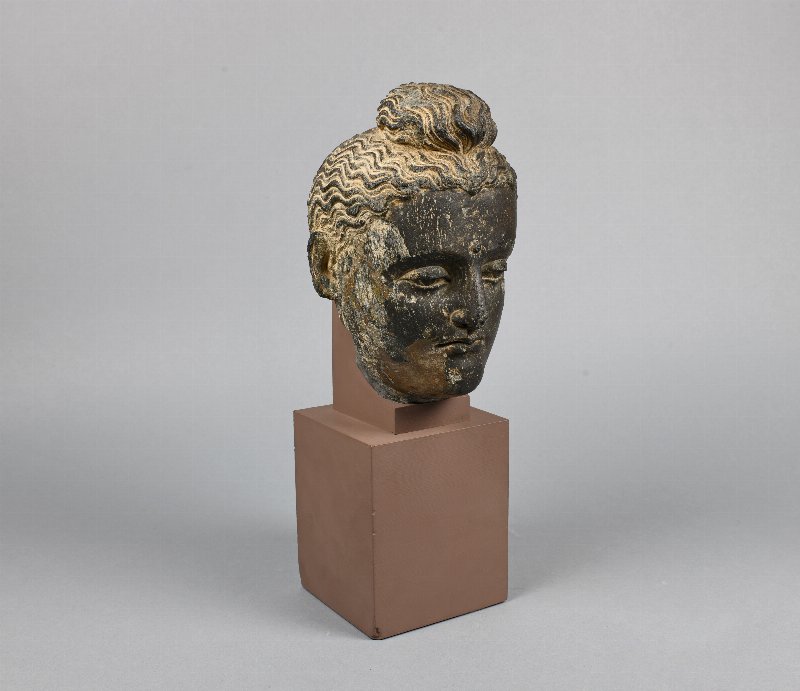Statue Fragment
29-88-2
From: Pakistan | Gandhara
Curatorial Section: Asian
| Object Number | 29-88-2 |
| Current Location | Collections Storage |
| Culture | Greco-Buddhist |
| Provenience | Pakistan | Gandhara |
| Date Made | 2nd Century - 3rd Century |
| Section | Asian |
| Materials | Schist |
| Iconography | Buddha Head |
| Description | Heavily polished Buddha head made of dark grey schist, a material associated with the region.The ushnisha (uṣṇīṣa) on top of the Buddha’s head signifies wisdom.The stylized locks of hair arranged in a top knot resemble those on Greco-Roman statues of Apollo.The Urna (ūrṇā), a circular dot placed on the forehead of the Buddha, symbolizes the eye of wisdom and the vision into the divine.The elongated ear lobes, stretched by heavy jewelry, hint at the Buddha’s early life as a prince who lived in luxury. Gandhara, a historical region in present-day Pakistan, was a center for commercial and cultural exchanges between the Subcontinent, Central Asia, and the Middle East during ancient times. Informed by the unique geographic location and the complex history, Buddhist art produced in the region incorporated the artistic vocabulary of both Indian and Hellenistic traditions. Scholars have credited Gandharan artists with the invention of an anthropomorphic representation of the Buddha, pointing to the Greek influence on early Buddhist art. Before the representations of the Buddha in human form, artists used aniconic depictions, symbols like footprints or wheels, to indicate his presence. However, the emergence of the Buddha image has been a contested one. Contemporaneously, artists in Mathura also created anthropomorphic images of the Buddha. The two schools evolved around different styles of Buddhist images and influenced each other. |
| Height | 34 cm |
| Credit Line | Purchased from C. T. Loo, 1923 |
| Other Number | 0908 - Cast Number |
Report problems and issues to digitalmedia@pennmuseum.org.






